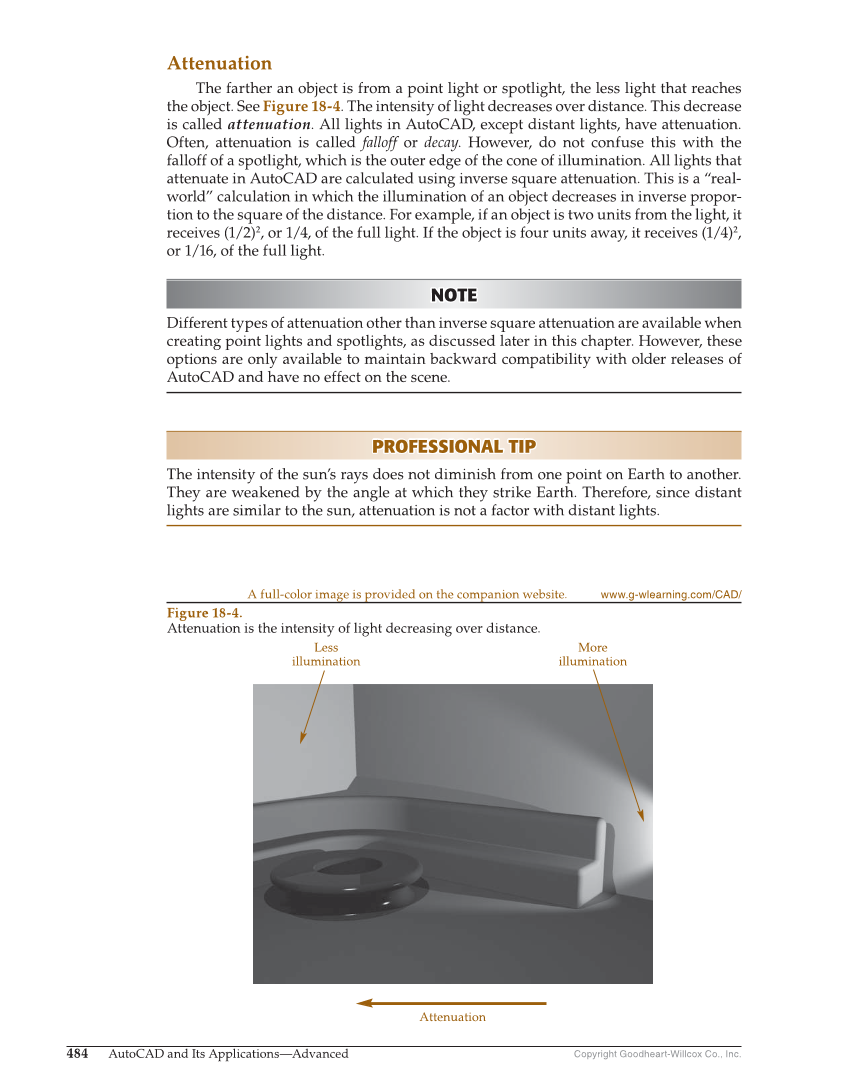Copyright Goodheart-Willcox Co., Inc. 484 AutoCAD and Its Applications—Advanced Attenuation The farther an object is from a point light or spotlight, the less light that reaches the object. See Figure 18-4. The intensity of light decreases over distance. This decrease is called attenuation. All lights in AutoCAD, except distant lights, have attenuation. Often, attenuation is called falloff or decay. However, do not confuse this with the falloff of a spotlight, which is the outer edge of the cone of illumination. All lights that attenuate in AutoCAD are calculated using inverse square attenuation. This is a “real- world” calculation in which the illumination of an object decreases in inverse propor- tion to the square of the distance. For example, if an object is two units from the light, it receives (1/2)2, or 1/4, of the full light. If the object is four units away, it receives (1/4)2, or 1/16, of the full light. NOTE NOTE Different types of attenuation other than inverse square attenuation are available when creating point lights and spotlights, as discussed later in this chapter. However, these options are only available to maintain backward compatibility with older releases of AutoCAD and have no effect on the scene. PROFESSIONAL TIP PROFESSIONAL TIP The intensity of the sun’s rays does not diminish from one point on Earth to another. They are weakened by the angle at which they strike Earth. Therefore, since distant lights are similar to the sun, attenuation is not a factor with distant lights. Less illumination More illumination Attenuation Figure 18-4. Attenuation is the intensity of light decreasing over distance. A full-color image is provided on the companion website. www.g-wlearning.com/CAD/
